Japanese version Home Page Updated on August 3, 2004
Usage of USNO Flagstaff Station Integrated Image and Catalogue Archive ServiceOpen the following page. USNO Flagstaff Station Integrated Image and Catalogue Archive Service Using the USNO Flagstaff Station Integrated Image and Catalogue Archive Service, you can display the DSS images, and you can search the data of stars in the USNO-A2.0 / USNO-B1.0 catalogs.
|
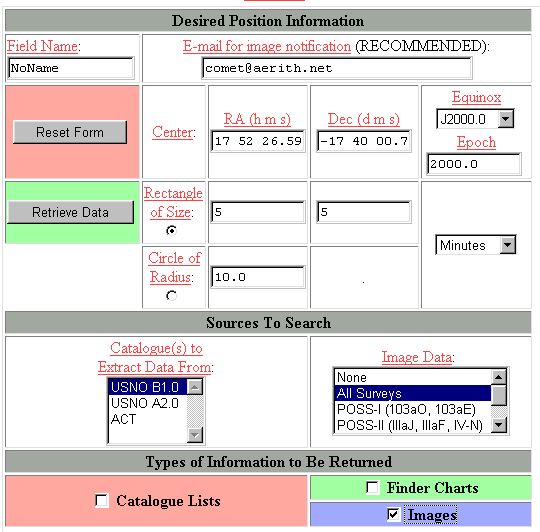
|
Push the "Retrieve Data" button, and the following messages will be displayed.
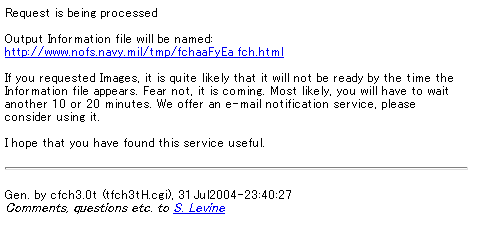
|
Click the displayed URL (http://www.nofs.navy.mil/tmp/fchaaFyEa_fch.html), and the available images will be listed up.
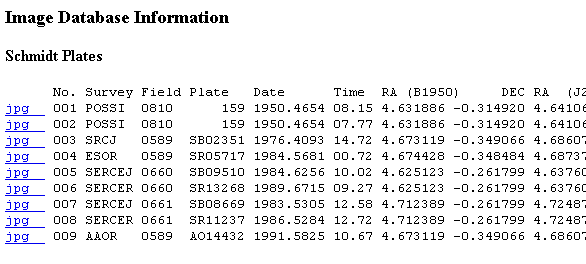
|
However, the images have not been available yet. The image will not be displayed even if you click the "jpg". You have to wait for several minutes, or several dozens of minutes, until the images become available.
When the images become available, an E-mail will be delivered to you. Then, select one image in the list and click the "jpg", and the image will be displayed.
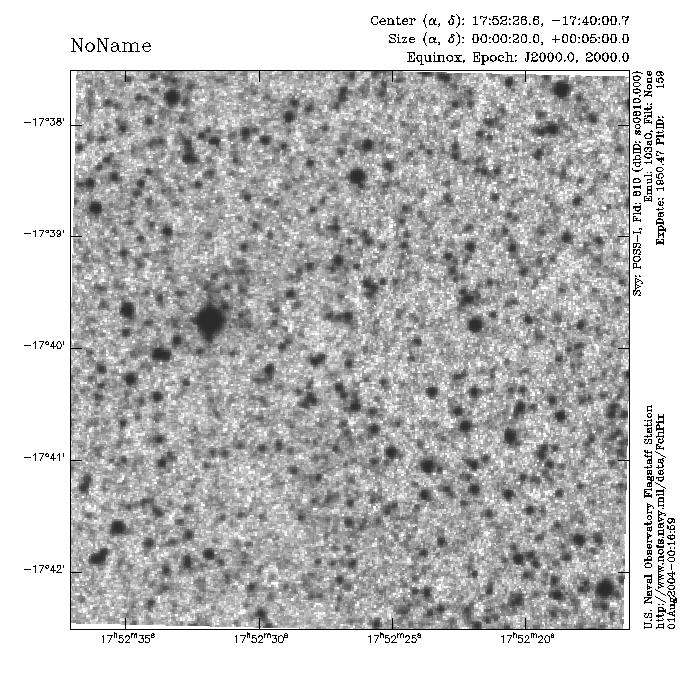
|
 Investigation of USNO-A2.0 / USNO-B1.0 Data
Investigation of USNO-A2.0 / USNO-B1.0 Data
For example, let's investigate the data of a star at R.A. 22h54m03s.78, Decl. +58o54'02".1.
Input the required parameters.
- RA
- Input the R.A. Here input as "22 54 03.78".
- Dec
- Input the Decl. Here input as "+58 54 02.1".
- Rectangle of Size
- When you know the accurate position of the star, you should make the search field very small. Here input "1" in the two boxes, in order to search stars within 1x1 arcmin field.
- Catalogue(s) to Extract Data From:
- Select "USNO-B1.0" and "USNO-A2.0".
- Catalogue Lists
- The check box is on by default, so let it as is.
- Finder Charts
- Check off.
- Images
- The check box is off by default, so let it as is.
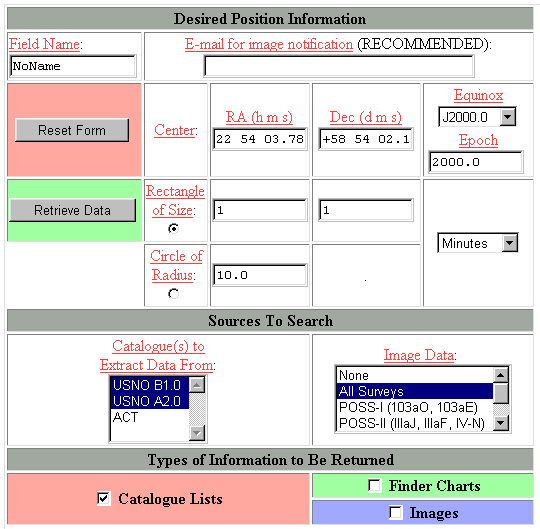
|
Push the "Retrieve Data" button, and the following page will be displayed.

|
Select "USNO B1.0 Star List" or "USNO A2.0 Star List", and the star data will be displayed. Note that all star data within the search field are displayed, so find the correct data based on the R.A. and Decl., or the brightness.

|
|
Acknowledgements: This research has made use of the USNOFS Image and Catalogue Archive operated by the United States Naval Observatory, Flagstaff Station (http://www.nofs.navy.mil/data/fchpix/). |
|
Acknowledgements: The Digitized Sky Surveys were produced at the Space Telescope Science Institute under U.S. Government grant NAG W-2166. The images of these surveys are based on photographic data obtained using the Oschin Schmidt Telescope on Palomar Mountain and the UK Schmidt Telescope. The plates were processed into the present compressed digital form with the permission of these institutions. The National Geographic Society - Palomar Observatory Sky Atlas (POSS-I) was made by the California Institute of Technology with grants from the National Geographic Society. The Second Palomar Observatory Sky Survey (POSS-II) was made by the California Institute of Technology with funds from the National Science Foundation, the National Geographic Society, the Sloan Foundation, the Samuel Oschin Foundation, and the Eastman Kodak Corporation. The Oschin Schmidt Telescope is operated by the California Institute of Technology and Palomar Observatory. The UK Schmidt Telescope was operated by the Royal Observatory Edinburgh, with funding from the UK Science and Engineering Research Council (later the UK Particle Physics and Astronomy Research Council), until 1988 June, and thereafter by the Anglo-Australian Observatory. The blue plates of the southern Sky Atlas and its Equatorial Extension (together known as the SERC-J), as well as the Equatorial Red (ER), and the Second Epoch [red] Survey (SES) were all taken with the UK Schmidt. Supplemental funding for sky-survey work at the ST ScI is provided by the European Southern Observatory. |
